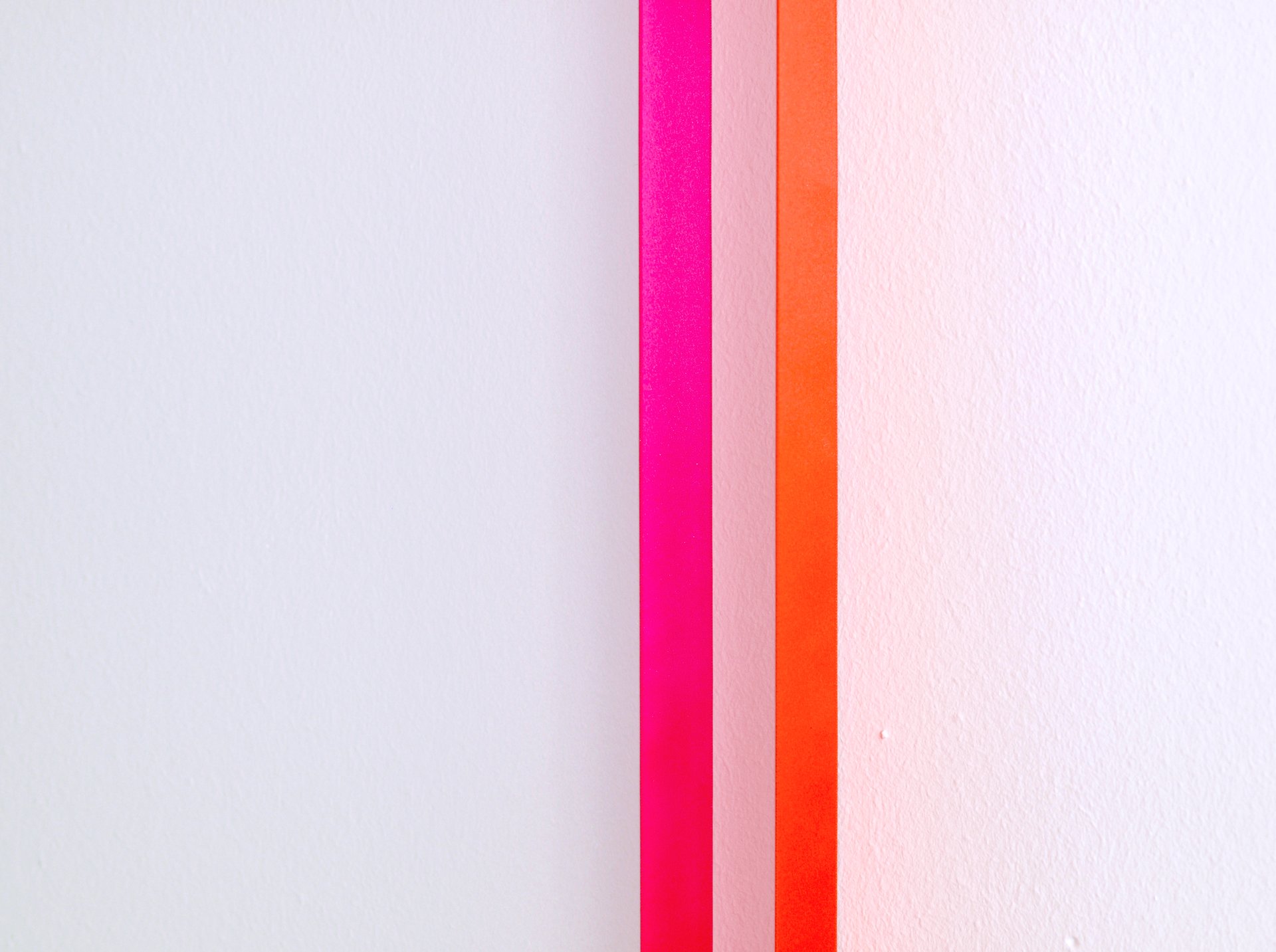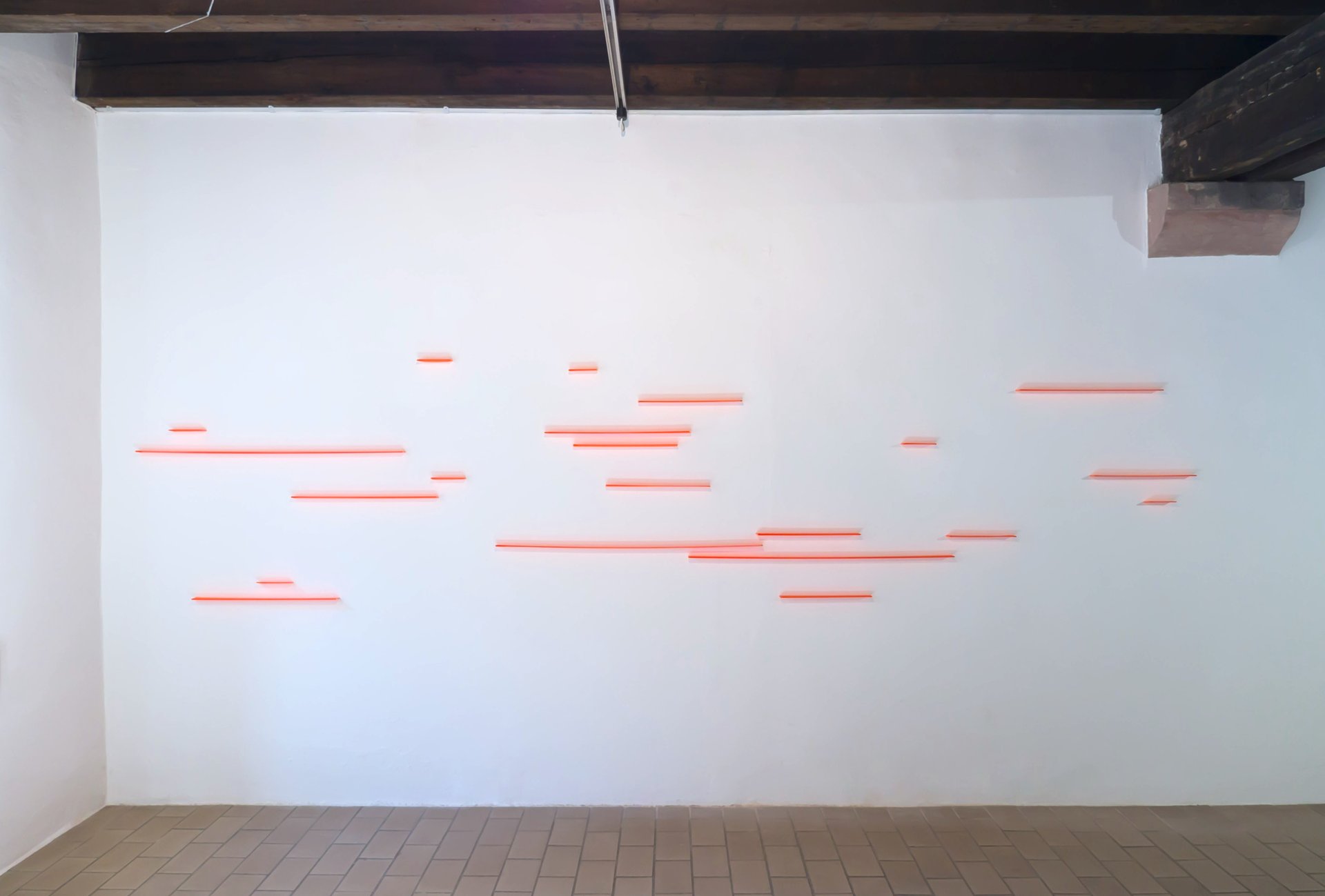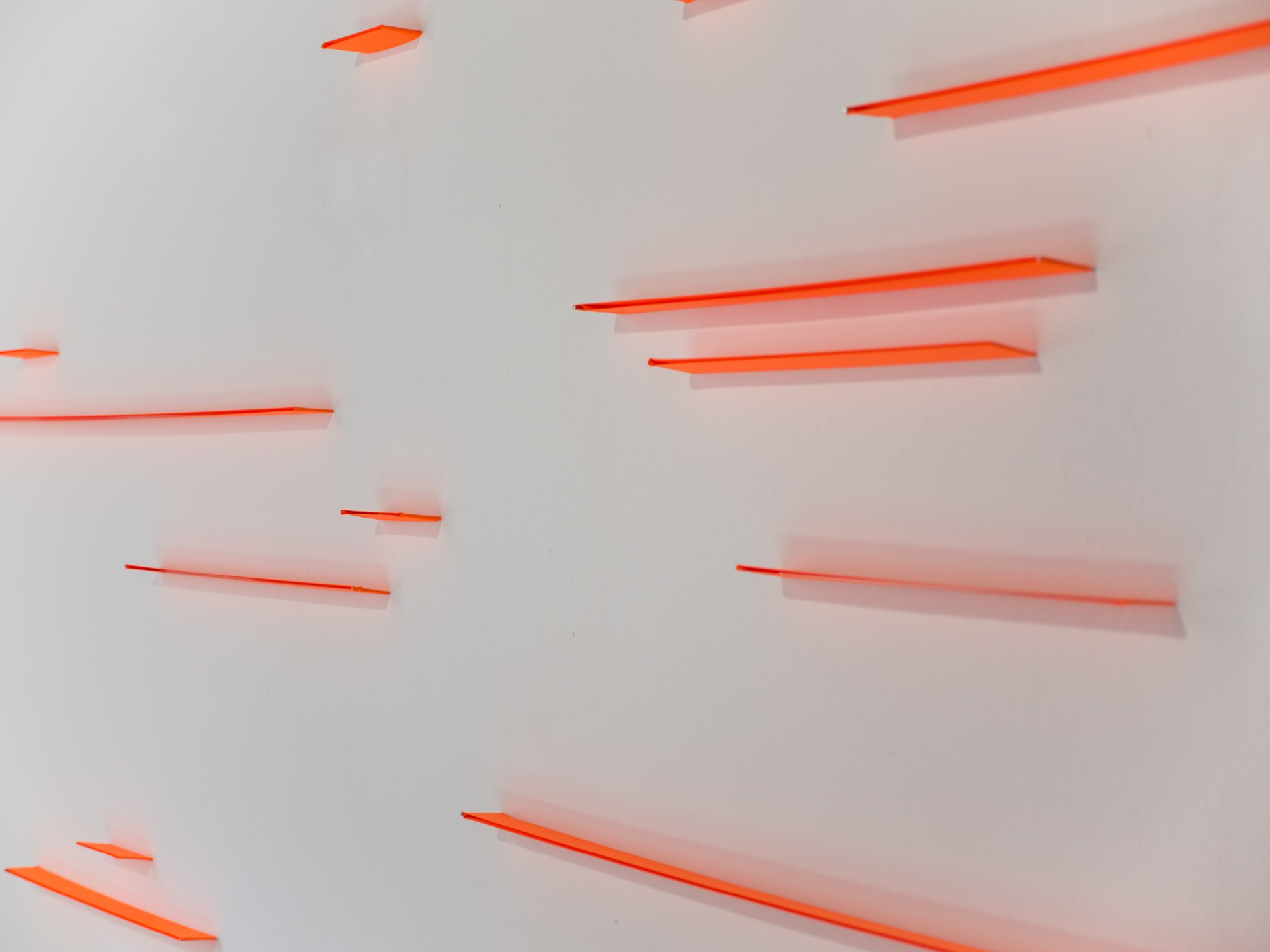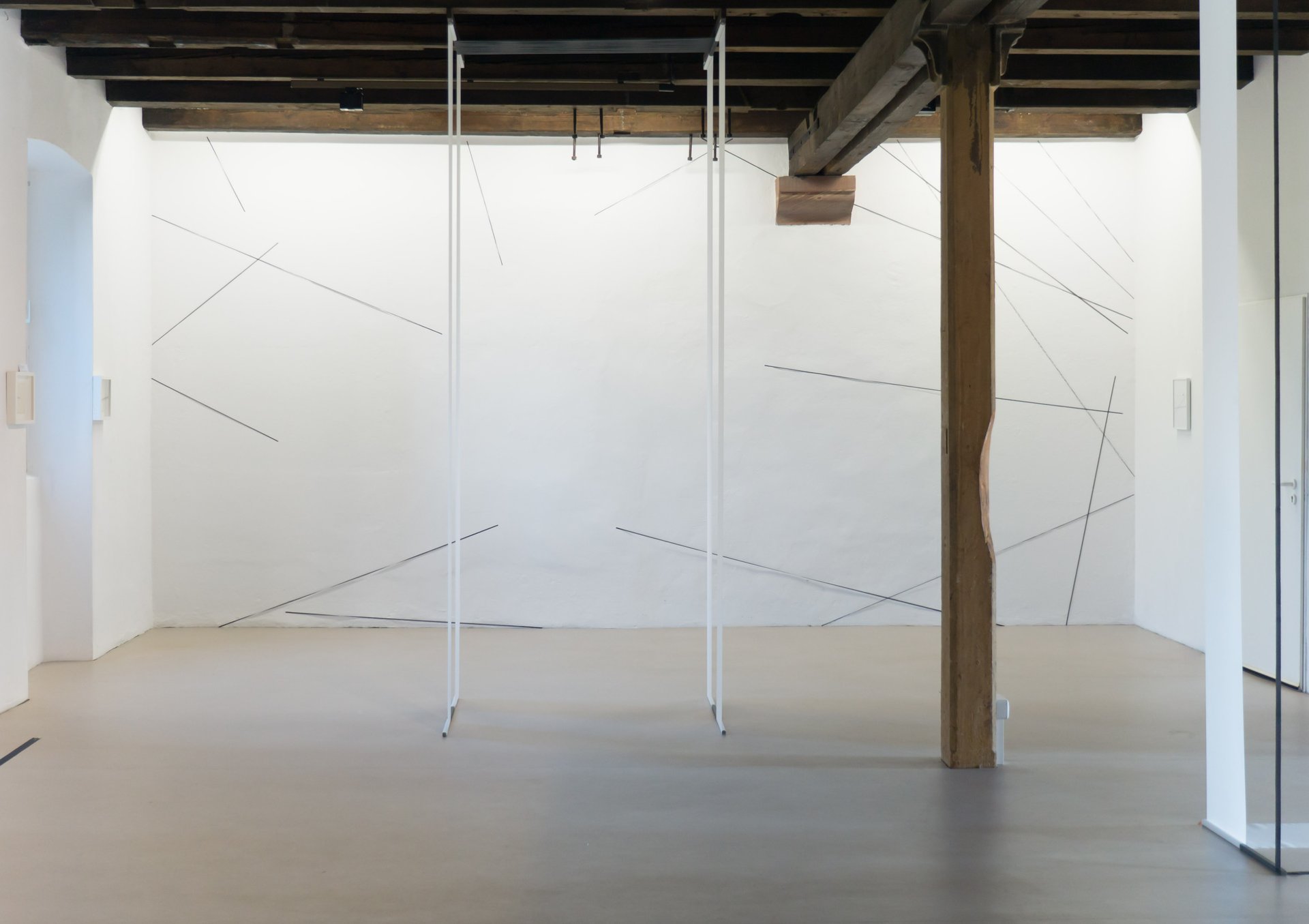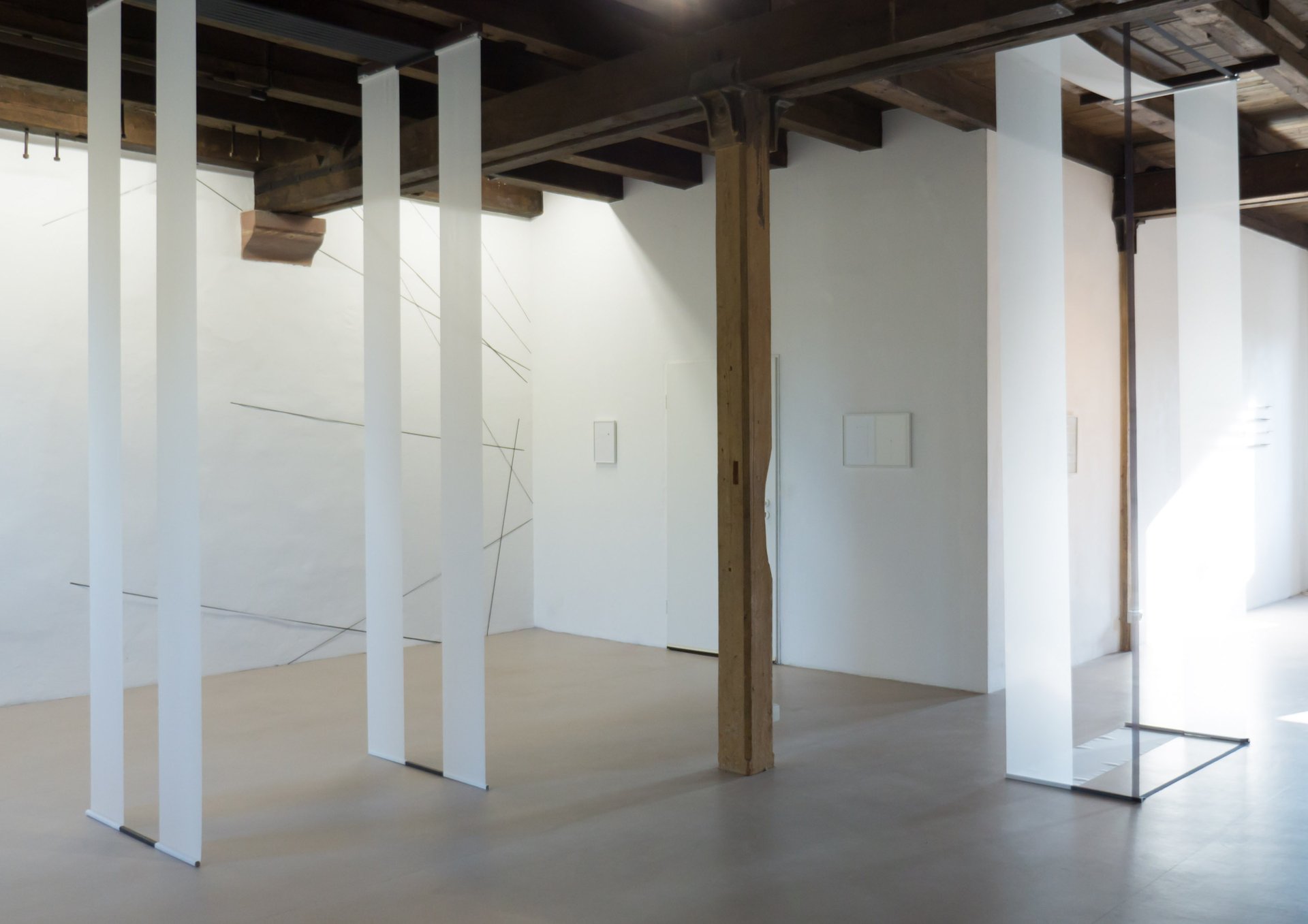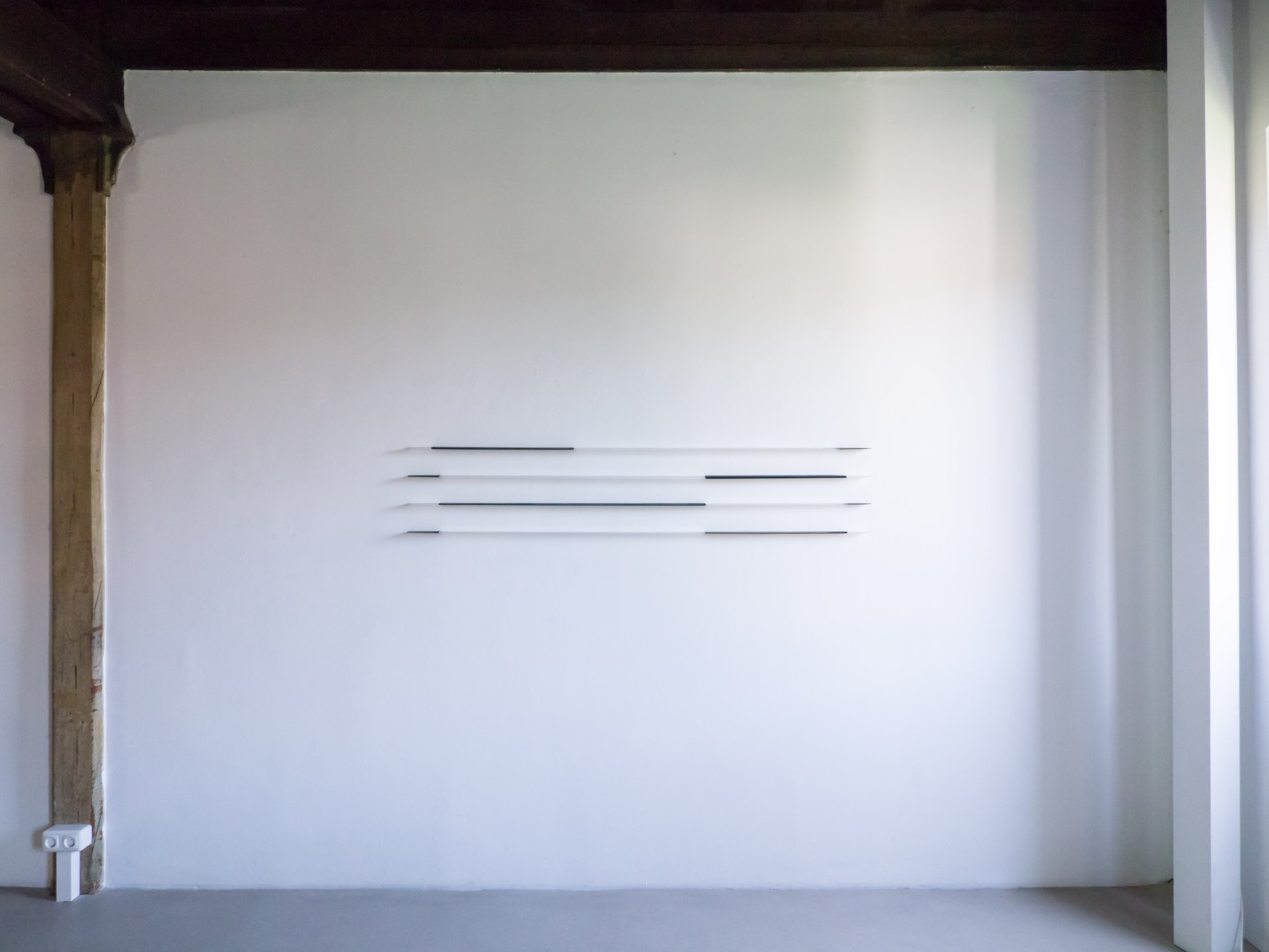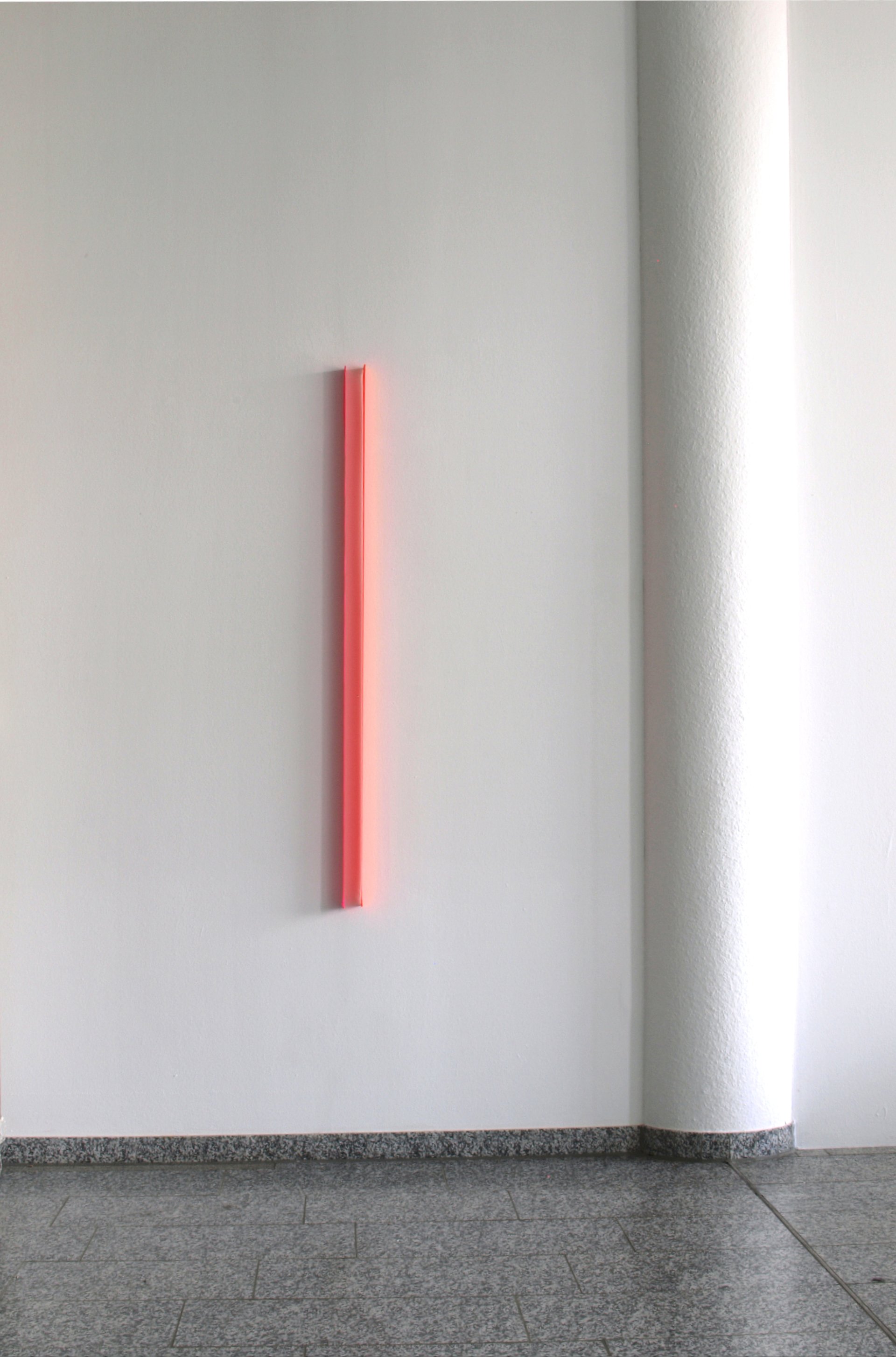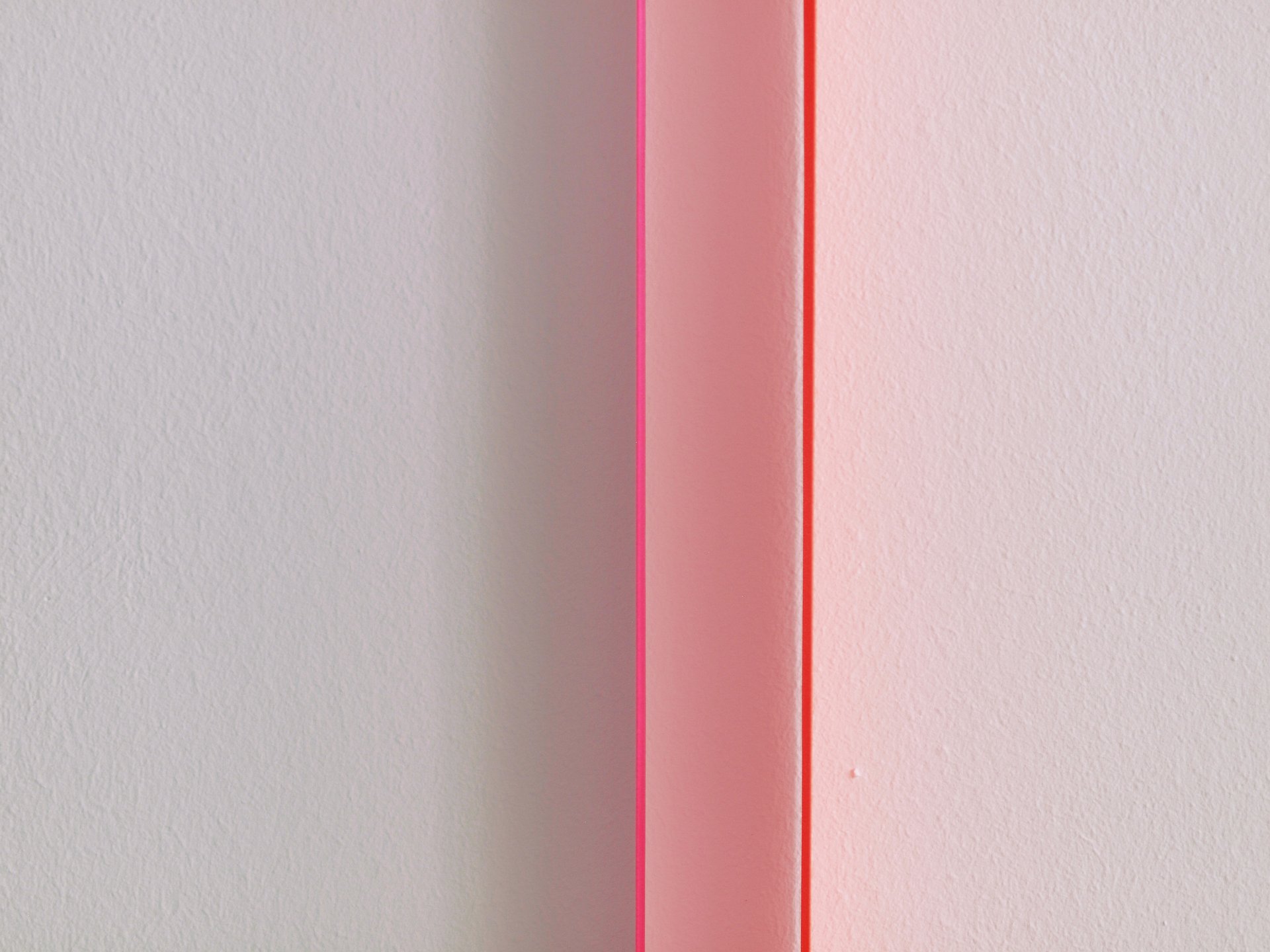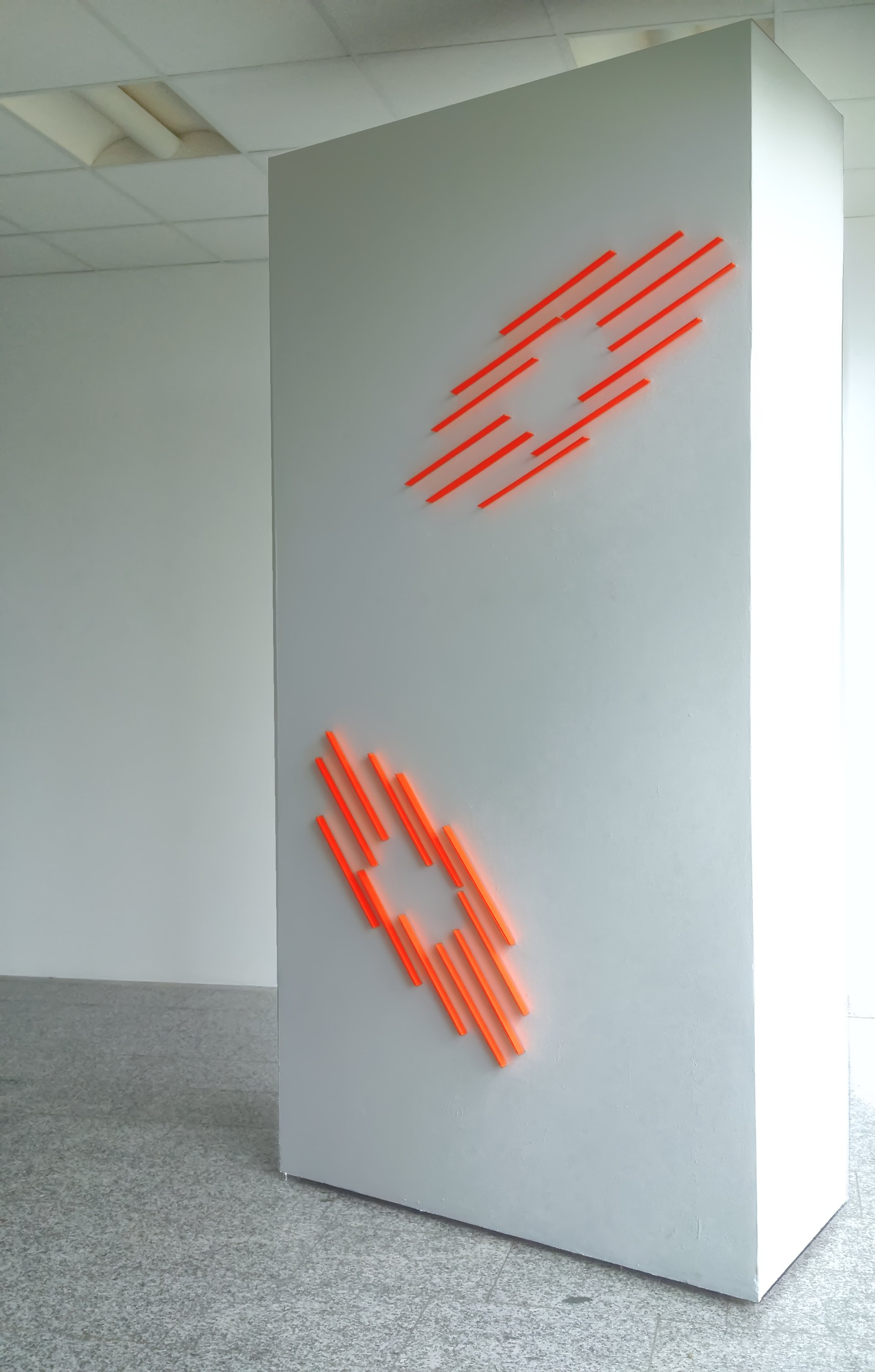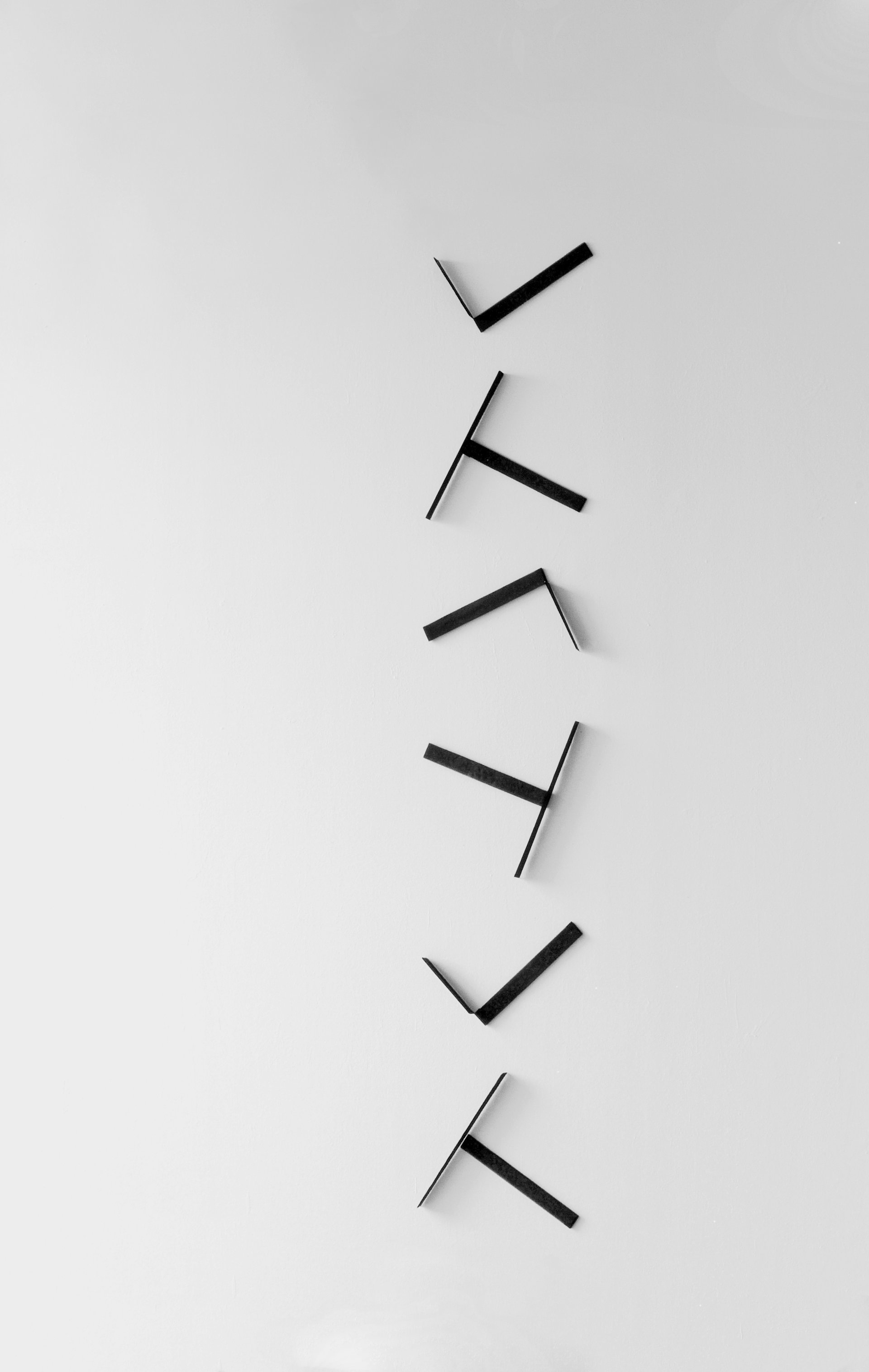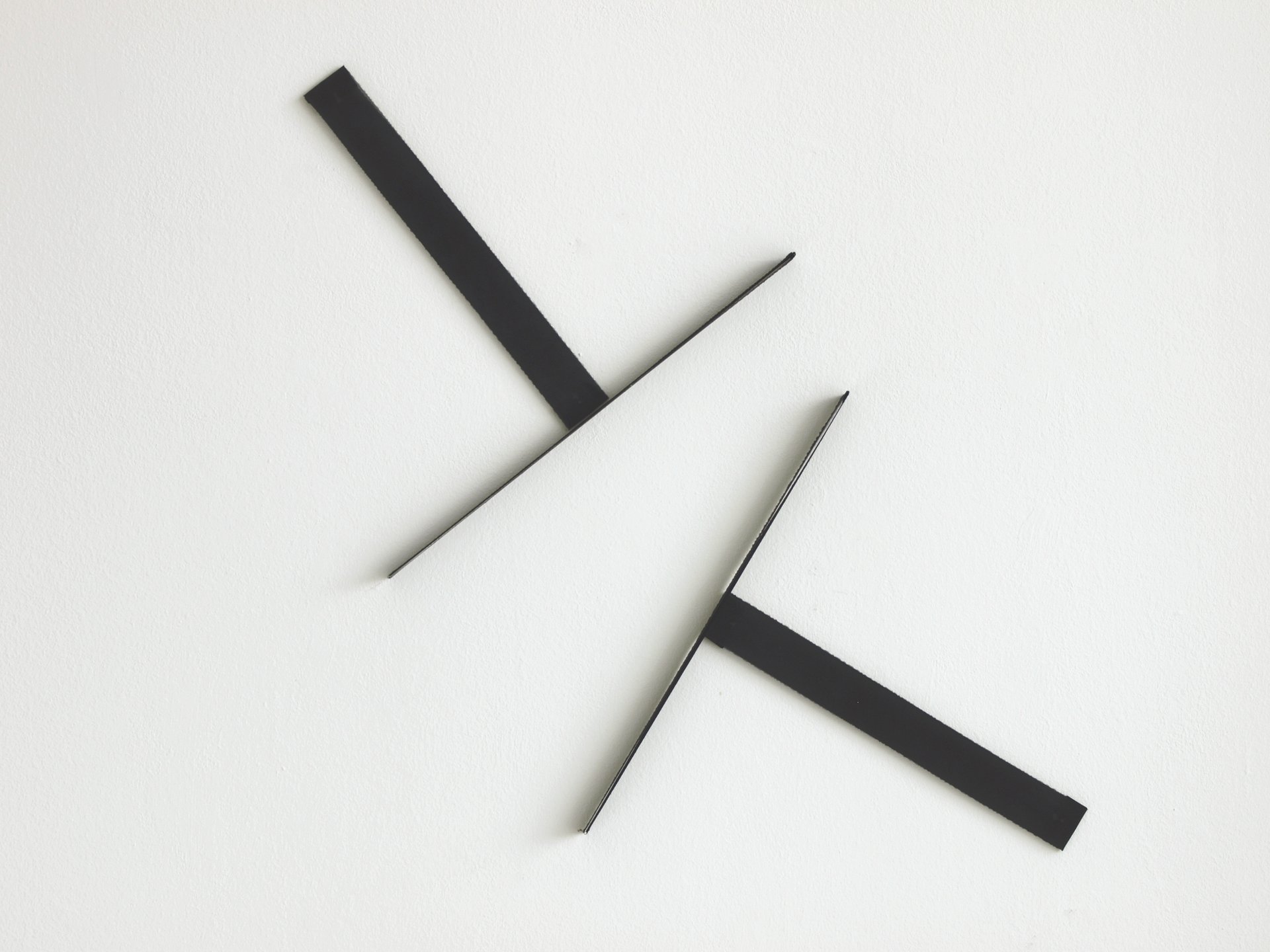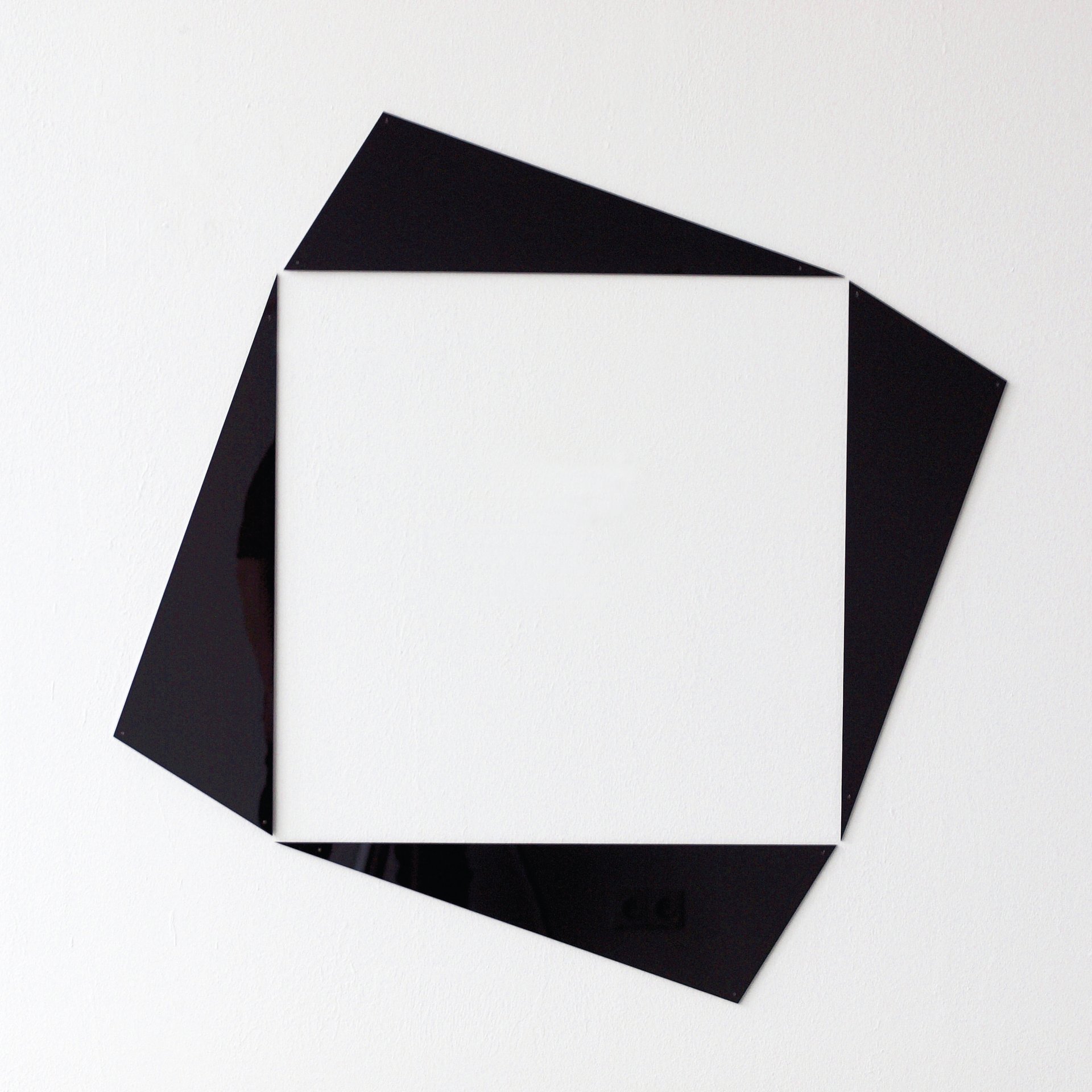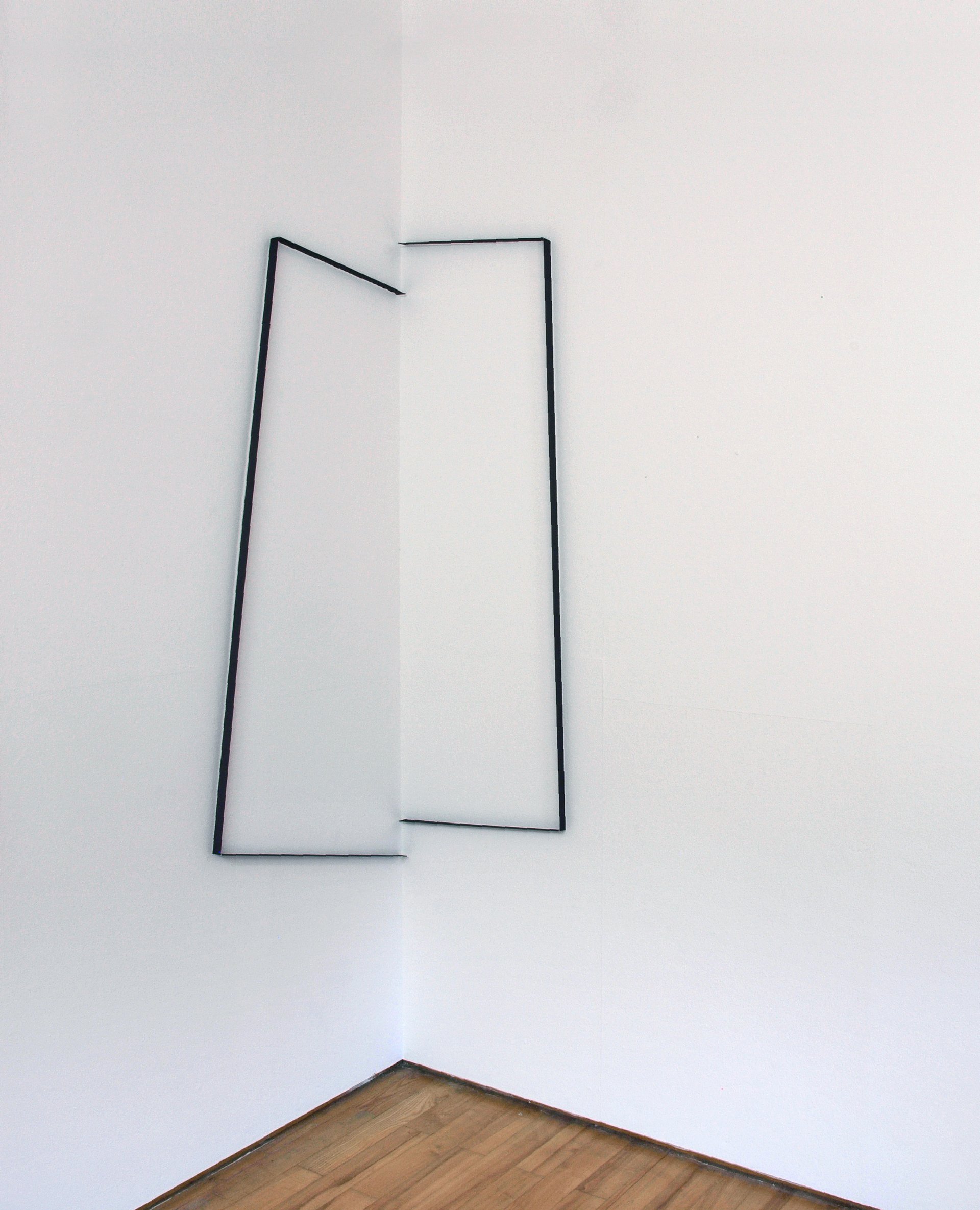[...] in concrete art, the ideality of line and plane has to be translated into material in order to become aesthetic reality. in this case, gisela hoffmann has a preference for two materials that are very different and yet sometimes come very close in the radiant colour effects they have: ribbons or threads of fabric and plates of acrylic glass. in photographs of “fuge 15”, the ribbons woven in satin weave and looped around two nails seem to be made of acrylic glass, so brightly does their orange colour radiate onto the wall. the title evokes associations with music, but the parallel lines of different length are also reminiscent of lines of poetry. when marcel broodthaers produced an abstract image of stéphane mallarmé’s un coup de dés, the result was a very similar structure. after all, rhythm is a term that can be applied not only to music.
light effects give back to the shapes and bodies something of their euclidean purity that inevitably had to be lost in their transition into the material world. the fluorescent edges of the acrylic glass transform “horizon 08”, giving it an aspect of immateriality. using a sandblaster, gisela hoffmann has lightened the surfaces beneath the imaginary horizon line in this eleven-part wall work. three different levels of lightness structure the undulation of the rectangles that works without rules, only finding its dimensions in the viewer’s intuition. concrete art does not automatically have to end in orthodox systematisation.
in the wall work “inside out”, we see an exact square in its purest, as it does not exist in reality. four identical triangles have each been rotated 90 degrees, thus leaving a square of wall in their midst. in the viewer’s perception the four triangles are less present than the square. this is an effect of gestalt psychology that the artist likes to use. “raumlinien 26” also operates with our need for simple, clear shapes. here, a rectangular shape seems to be broken. the parts are arranged vertically misaligned by a few centimetres to the left and right of a corner. the two halves are orthogonal in themselves, but have been hung at an angle to each other. [...] gisela hoffmann knows that art begins where the viewer is brought into the calculation. point, line, surface and space are not an end in themselves, but are objects of a perception that ideally is aware both of its contingency and of its own capability in equal measure and draws aesthetic pleasure from that.
thomas heyden, 2017
